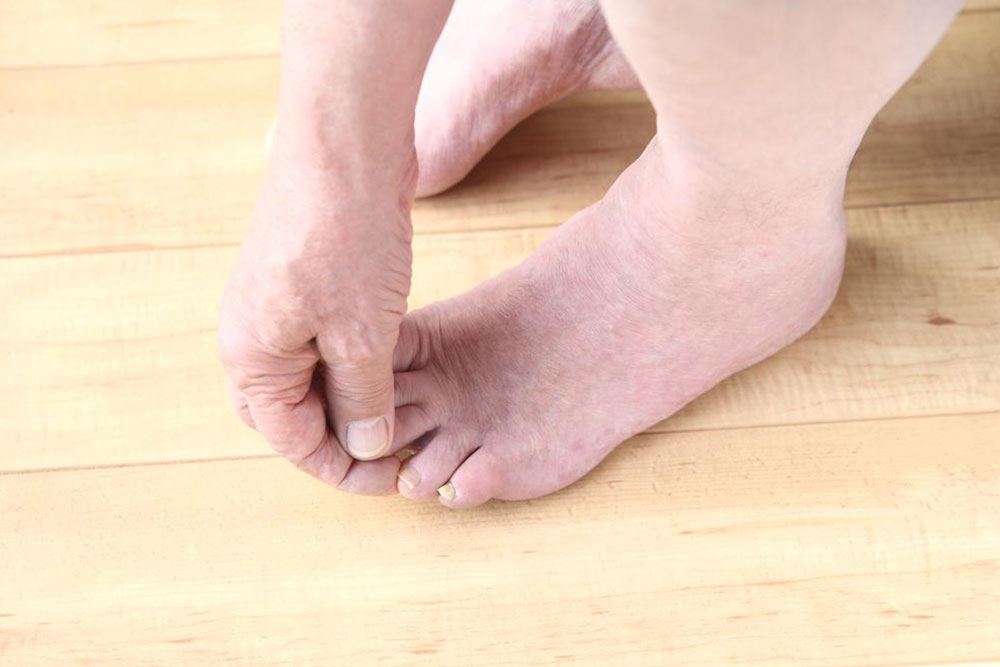Common Diabetic Feet problems and Its Preventive Measures
If you have lately been diagnosed with high blood sugar and were petrified to hear that diabetes affects your feet as well then you are not alone. Many people are unaware that diabetes can affect your feet and in some serious cases people lose them as well. But there is nothing to feel threatened about and you can take care of your feet and be cautious about your diet to keep them healthy.

As many of you are unable to understand the relationship between diabetes and its effects on feet we here, decode everything that you want to know from scratch.
How can it affect your feet?
People with high blood sugar levels in their blood stand at the tip of serious foot complications and people are on the verge of suffering from two conditions, namely diabetic neuropathy and peripheral vascular disease.
- Diabetic neuropathy : If your diabetes is uncontrolled, you stand at a risk of damaged nerves in your legs and feet. There will be a lack of feeling of any sensation of hot, cold or pain and the condition is called sensory diabetic neuropathy. As you do not feel anything, you might not be able to feel any injury or cut on your foot, which might be left untreated thus increasing infection. Around 10% of people suffering from diabetes develop foot ulcers because of nerve damage and peripheral vascular disease. Another condition that may happen is that there may be too much pressure on foot as the nerves that form muscles weaken it affects the alignment of the foot, putting unreasonable pressure on your foot.
- Peripheral vascular disease : You must have heard people telling diabetics to take care of themselves and prevent themselves from any injury as it takes them longer to recover. Well, the reason behind the same is that diabetes affects blood flow and due to the lack of blood flow it takes longer for any sore or any injury to heal. The peripheral vascular disease is a circulation disorder affecting blood vessels away from the heart. If your infections do not heal they may develop ulcers or gangrene within no time.
Common diabetic feet problems and measures to avoid them
Below are some common diabetic feet problems that if left untreated can develop infections and serious complications and in some cases lead to amputation.
- Hammertoes : here the toes are bent because of weakened muscles. This usually runs in family but can also be caused by wearing shoes too short for your foot size. Corrective footwear helps in correcting them but in worst cases, surgery is recommended.
- Athlete’s foot : it is a fungus that causes, itching, redness, and cracking of the skin on your feet. Infections can be caused by germs entering your skin through cracks. In such cases, doctors recommend anti-fungal medicines and sometimes foot creams to treat athlete’s foot.
- Blisters : caused by shoes that are not a good fit or are new. When your footwear rubs the same spot on your foot, blisters are formed. Use bandages to cover them after applying antiseptic cream and do not pop them.
- Nail Fungal infections : if infected by fungus the nails of your feet may become brown or yellow, brittle and thick and might detach themselves from the rest of the nail. Avoid shoes that are dark and keep your feet free from any moisture formation, keep them dry, if you wear socks then wear cotton ones that absorb sweat. If these nails are injured, then you stand at the risk of spreading the fungal infection. There are some ointments that can be applied but doctors also prescribe oral anti-fungal and anti- infection medication to treat the same.
- Calluses : usually developed on the underside of the foot, it is a hard skin developed by the uneven weight distribution at the heel or bottom of the forefoot. Wear proper fitting shoes to avoid calluses formation. Some sort of calluses are normal to form and can be removed during bath time using a pumice stone. Do not cut them with nail cutter or any sharp object as you might end up injuring yourself.
- Plantar warts : they look like calluses but are on the heels or on the ball of the foot. They are painful and can appear in singles or in clusters and might have appearances of pinholes or black spots in the center. It is caused by a virus that affects the outer layer of the skin on your feet. If you develop these it is recommended to see your doctor and not indulge in self-medication.
- Foot Corns
It is hard skin near the toe and can be formed due to pressure from your shoe. This can also be removed using pumice stone during bathing. - Dry skin
The cracks formed due to dry skin can be a gateway for germs to enter your body. Use moisturizers to keep your skin moist and soft.
Don’t be alarmed reading about the diabetic feet problems; these can be avoided by following a proper diet regime, exercising, and having a hygiene routine. If you find any issues or infection related to your diabetic feet, get them treated at the earliest.




